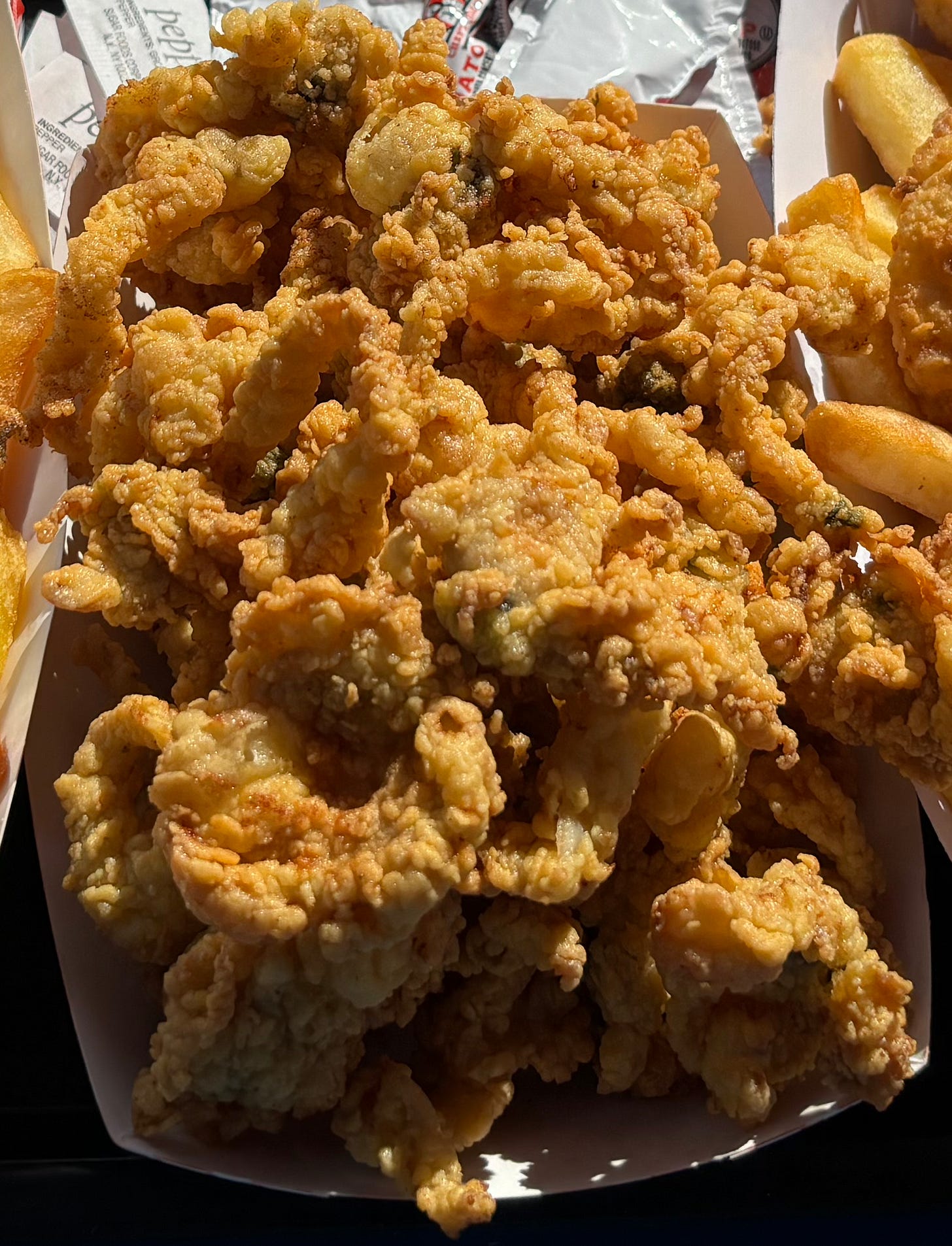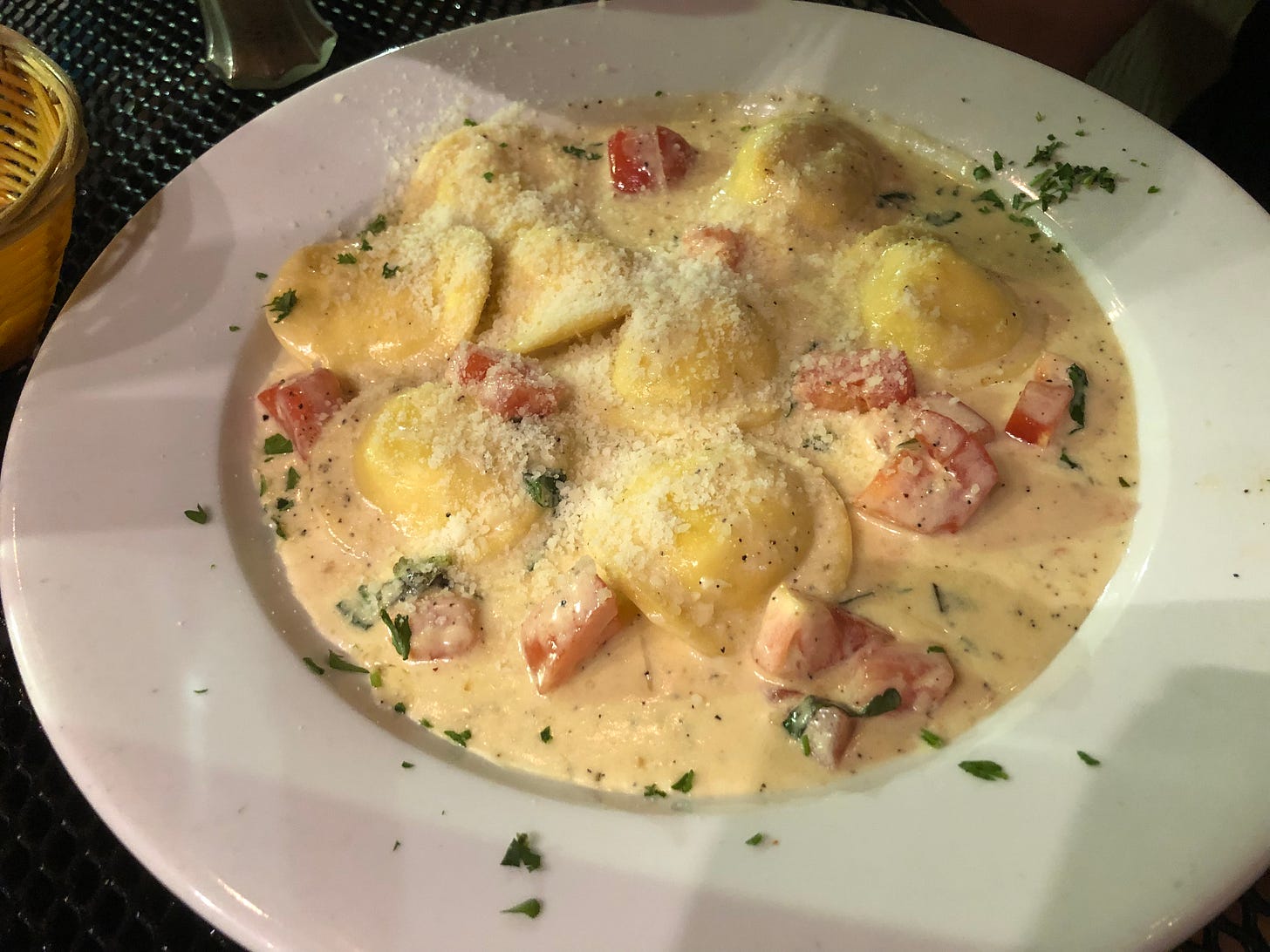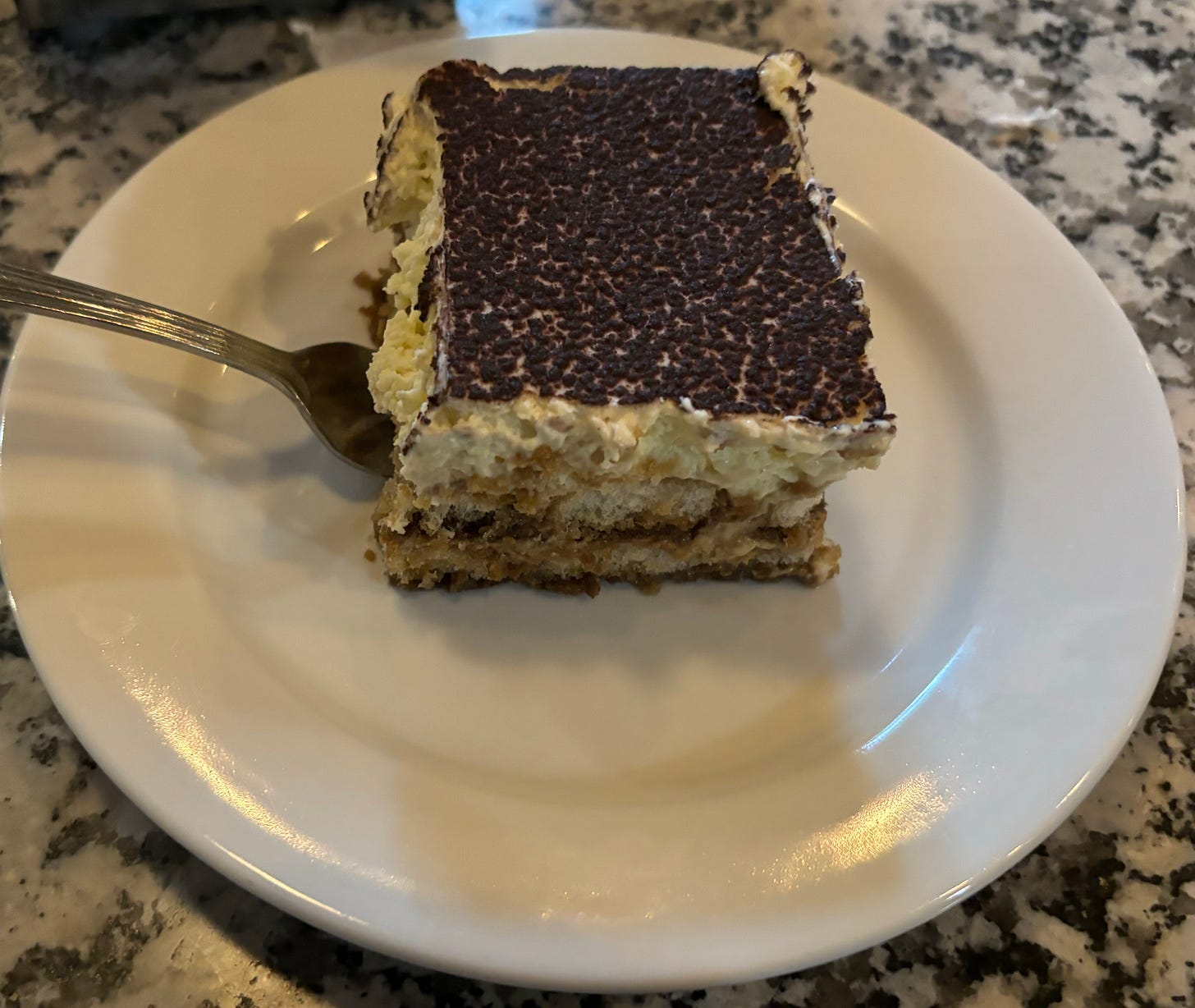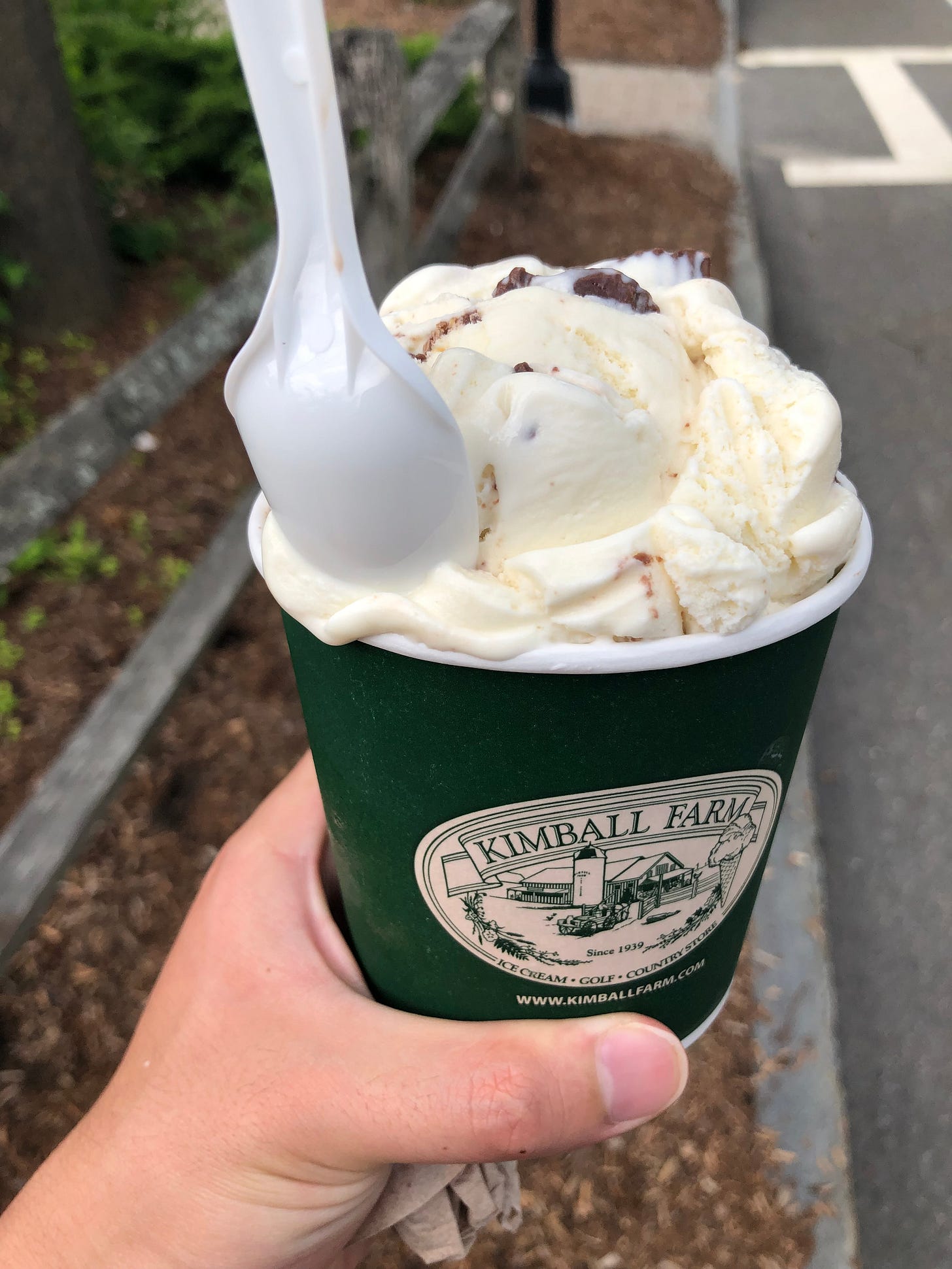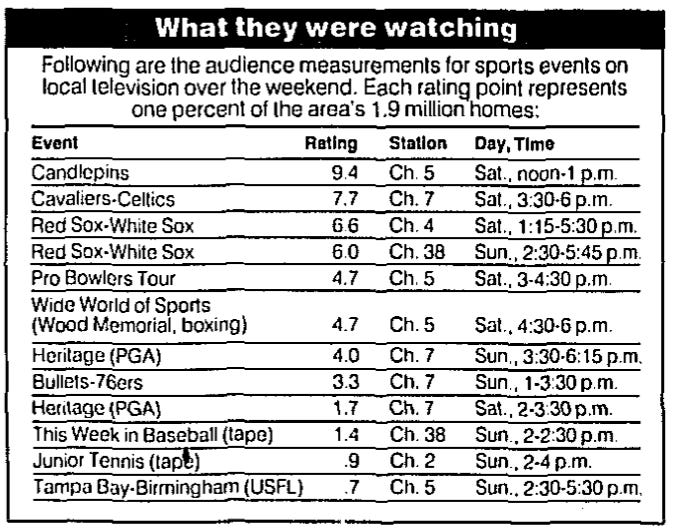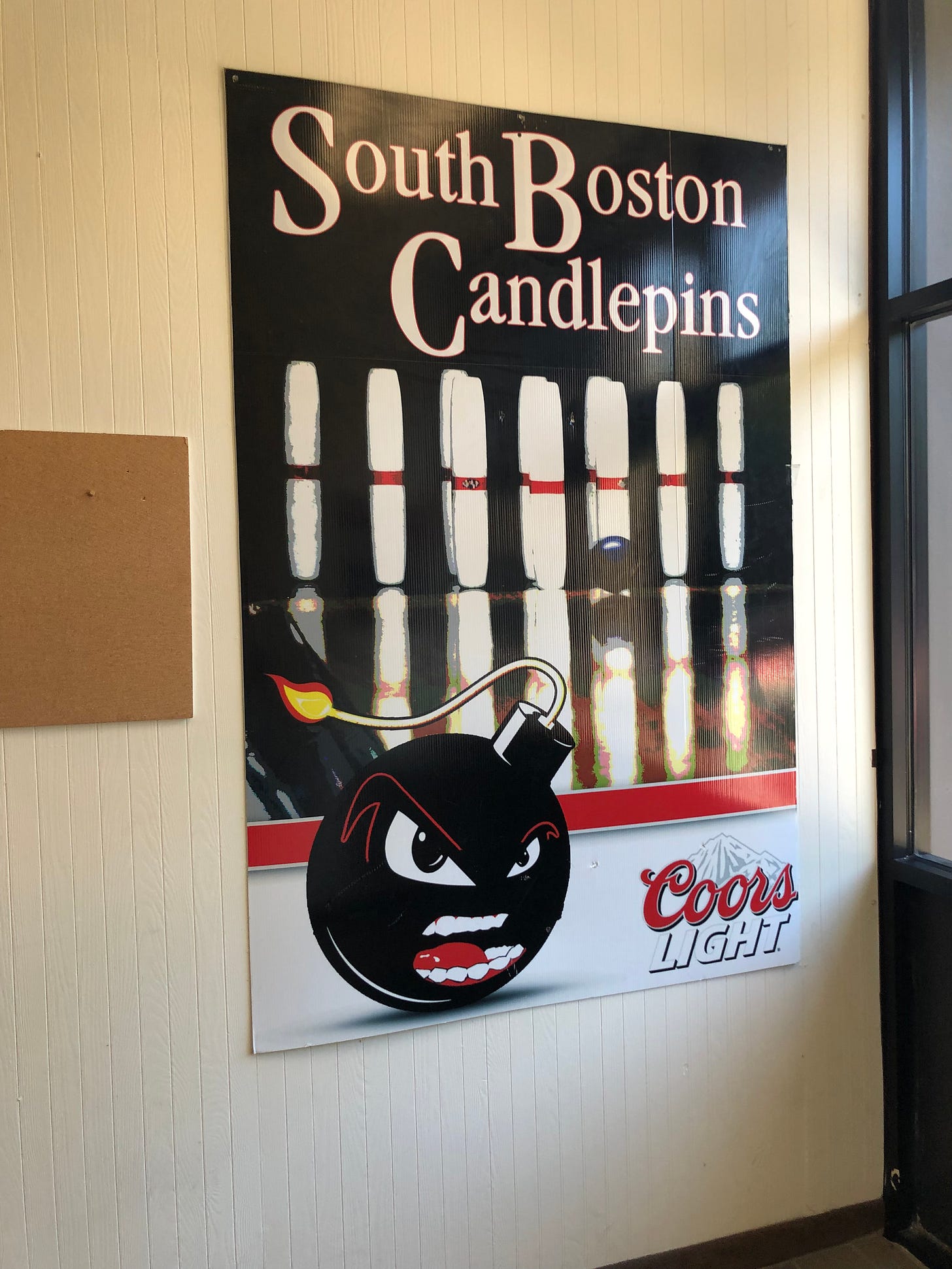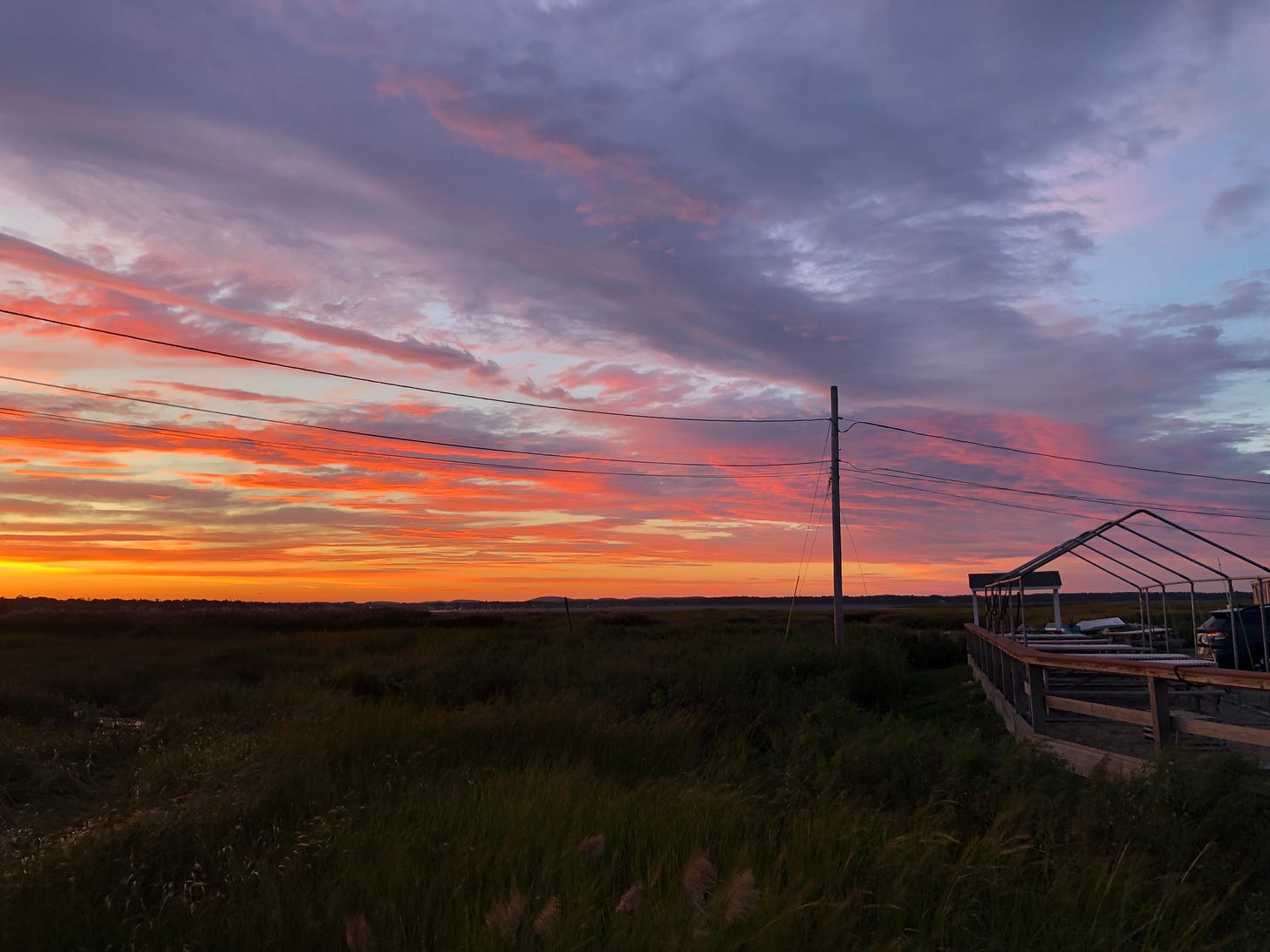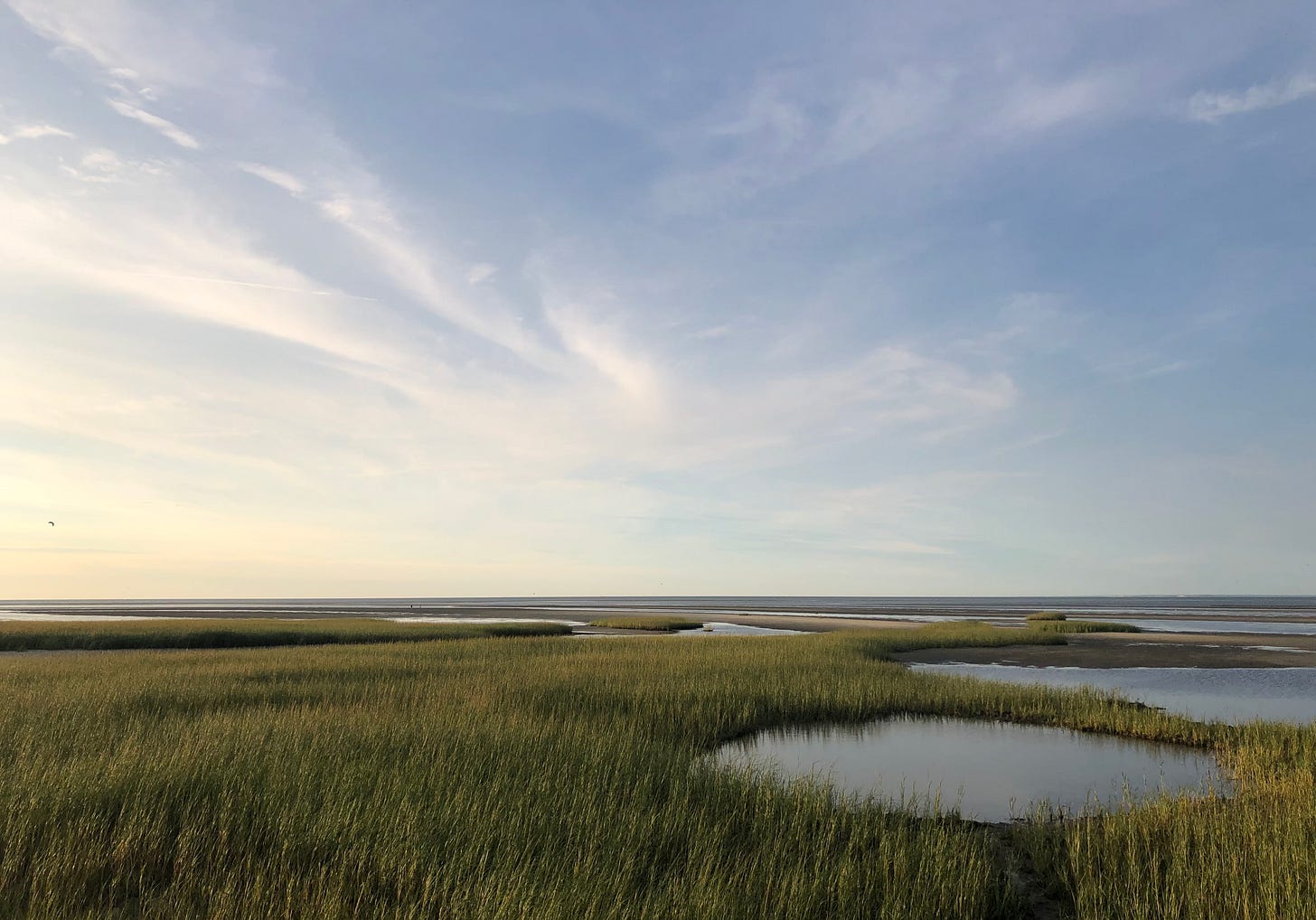Introduction
So you’ve heard of Boston. Maybe you saw Good Will Hunting, witnessed a pack of rabid Red Sox fans overtake your city, or watched a food influencer devour clam chowder on your feed. Perhaps the word “Massachusetts” conjures memories of middle-school history units on Lexington or the Mayflower. Whether you’re stepping foot in New England for the first time or you’re settled here and seeking to feel more like a native, this guide is for you. As a lifelong local, I’m here to tell you what’s worth doing in my homeland: Eastern Massachusetts.
Representing our region on the national stage, Boston has cultivated an image as a city of sports diehards, colonial history, and intense academics. In the process, subtle cultural quirks have flown under the radar, often ones locals take for granted. This guide will introduce you to aspects of life here beyond travel blogs, Instagram reels, and gushy magazine writeups.
Eastern Mass. vs. Boston
I’m purposely framing this as a guide to Eastern Massachusetts, not just Boston. In most of the U.S., counties are the base unit of government; they provide essential services and have elected officials. As a result, places within a county usually share an identity. But New England is different; here, every town or city has its own government. References to the Boston area can obscure the fact that said area is really dozens of places, all with distinct identities. You’ll get a far more complete picture of Massachusetts by venturing beyond Boston; indeed, many stereotypically “Boston” experiences are likelier to take place outside the city.
IMPORTANT NOTE: This is not a comprehensive listing of every good experience in Eastern Massachusetts. Instead, I’m emphasizing experiences unique to this area or strong points of the region. For instance, having tasted Mexican food in Southern California, I won’t be recommending any taco trucks here.
Leave a comment or message me on Instagram with your own recommendations! This is a living document — I greatly appreciate any input.
Table of contents
Food
Activities
Sports
Parks
Museums
Boston on a budget
Side trips
What to avoid
Outside the city
Dictionary
Interacting with New Englanders
Logistics for travelers
Food
Fried clams
The quintessential summertime treat in New England, no discussion on regional cuisine can exclude the glorious fried clam plate. The clams in question are native to the North Shore region of Massachusetts, a 45-minute drive from Boston. Plenty of restaurants in the city sell them, but quality there is much more variable.
Slightly sweet and briny — some outsiders never fully acquire the taste — the clams are dipped in a flour and milk-based batter before cooking to a golden brown. Usually no larger than a thumb, they balance juiciness and crispiness when properly prepared; as a result, they should be eaten immediately. The shacks serving them up, often humble counter-serve operations, fry not just clams but haddock, scallops, shrimp, calamari, and sometimes even oysters. To sample a variety of offerings, they usually offer a fisherman’s platter, which contains portions of three or four items on one plate. Order whole belly clams, not clam strips: the latter have less flavor and aren’t unique to New England.
Essex Seafood in the eponymous town is one of my favorite spots. The clams are portioned generously and always fresh; because it’s less well-known, there’s never a line, and the other menu offerings are rock-solid. Salem Willows’ Clam Shack, a seasonal operation from late May to late September, has the best prices and scenery of any shack in the top tier. The outdoor-only seating means you’ll need to watch for aggressive seagulls, but that’s a small price to pay. Dube’s in Salem (closed Sun & Mon), which has waiter service, fries up great clams alongside heaping portions of onion rings; skip the watery chowder, though. The reliably great Clam Box of Ipswich is notable for closing for a half-hour each afternoon to change their frying oil. It’s no secret, though: being the biggest name for clams outside of Essex, it gets very busy in summertime.
Bob Lobster has been a go-to of mine for years, though they changed ownership this year and still appear to be working out logistics; wait times have grown on busy weekends. Their clams are solid, but haddock is their best offering. J.T. Farnham’s, known for small and crispy clams, also recently underwent a transition of power; I’ve frequented them in the past but haven’t been under the new management. I have to mention the dish’s consensus originator, Woodman’s, sometimes derided as a tourist trap but still the only major player to fry clams in lard — there’s no denying it yields a unique taste in exchange for slightly less crispy bites.
If you can’t get to the North Shore, the Boston Sail Loft, on the waterfront near downtown Boston, is your best bet. The clams are solid and pair well with their smooth, dill-heavy chowder.
There are other classic seafood spots in the city or close by where I don’t order clams, but never hesitate to chow down on fish and scallops. Sullivan’s, a kid-friendly stand on Castle Island, has the fortune of being beside the water. The reliably fresh fish and chips at Courthouse Seafood in East Cambridge goes for a remarkable $10, but stick to that and avoid the weird-tasting chowder. Longstanding staples Yankee Lobster in the Seaport and Belle Isle Seafood (cash only) in Winthrop dish out simple, classic platters. And no write-up would be complete without including Cambridge’s own Legal Sea Foods, a reliable sit-down option for large groups.
South Shore bar pizza
If you’re craving a satisfying New York slice while in Boston, do your best to suppress it; you’ll only be disappointed. But you do have the chance to try a rare, hyper-local style of pizza closely associated with blue-collar culture in certain parts of Massachusetts.
These pies are slung almost exclusively in dingy bars across a smattering of nondescript towns south of Boston, yet they’re so locally ubiquitous many patrons have no clue they’re partaking in a regional tradition. Despite growing up a 40-minute ride from the cathedrals of bar pizza, I only learned of its existence in adulthood after meeting people who’d eaten it their whole lives. This pizza style’s many eccentricities have been chronicled extensively, but here’s the gist: 10-inch pies with toppings to the edge, a thin yet substantive buttery crust, and a one-of-a-kind cheese blend.
Bar pizza joints don’t need advertising budgets — they all have loyal regulars who know the deal. Dining rooms are lit sparingly and generally windowless. Pitchers of beer accompany Keno slips and paper placemats; no-nonsense waitstaff know regulars by name. These venues are the stalwart neighborhood watering holes so elusive in more rapidly changing places.
Randolph’s Lynwood Café (cash only) is bar pizza’s standard-bearer, serving nothing but South Shore pies to customers seated in wooden booths and metal barstools that evoke the 1960s. My personal favorite pie comes from the barren Home Café (cash only) in Brockton, with its slightly thicker, more buttery crust. You’ll find a more welcoming atmosphere at Buddy’s Union Villa, which boasts lively crowds on weeknights along with great pizza. Stoughton natives valiantly defend Town Spa (cash only, closed Mon) to the death; the spices in their sauce are slightly different from everyone else’s. Friends rave about Venus Café in Whitman, Poopsie’s in Pembroke (cash only, closed Mon), and J’s Flying Pizza in Bridgewater (cash only and run out of J’s garage). To double down on your cultural immersion, order your pizza with linguiça, a topping that reflects southeastern Massachusetts’ large Portuguese-American population.
There are a few places that purport to make bar pizza in Boston, but I haven’t found one that matches the South Shore heavyweights yet.
Italian-American fare
Don’t come to Massachusetts expecting an elegantly plated modern risotto or the most artful Neapolitan pizza. We’re a land of Italian-Americans; you’re here to gorge on heavy plates of chicken parm and family-style pasta. In Boston, these restaurants are concentrated in the North End, that rare neighborhood where both tourists and locals genuinely enjoy themselves.
Carmelina’s is, by far, the area’s hardest restaurant to get into. Try to go alone and snag a walk-in bar seat; their superb renditions of the classics — fried eggplant, gnocchi sorrentina, chicken parm — are well worth it. The unfussy Giacomo’s (cash only, no reservations) is an old-school classic; I crave their lobster ravioli, served in a rich garlic cream sauce instead of the thinner alcohol-tinged pink sauce most North End establishments default to. Though they don’t say it explicitly, Casarecce allows you to pair any pasta with any sauce on their menu; their fried calamari and alfredo are excellent, though portions skew smaller. On busy nights, Benevento’s tends to be less crazy than other spots, and their carbonara with homemade fusilli is excellent. Don’t fret if every place is packed: just head to Dino’s, a cafeteria-style counter with solid subs and a very good lobster ravioli prepared similarly to the Giacomo’s version. Isabella and Cantina Italiana are also reliable options.
After dinner, make sure you stop at Caffé Vittoria (cash only). Their tiramisu is my favorite dessert in all of Boston. It strikes a perfect balance of flavors: fresh, fluffy mascarpone with ladyfingers that melt in your mouth yet aren’t drowning in coffee. In the famous cannoli battle between Modern (cash only), Mike’s (cash only), and Bova’s, I give Modern a slight edge. Those bakeries’ other offerings tend to be cloyingly sweet, so stick to the cannoli.
If it’s lunchtime, pick up a sandwich at Bricco Salumeria; down a cramped alleyway on Hanover St., it’s easy to miss. Casa Razdora (lunch only, closed weekends), a short walk away in the Financial District, has a vast array of sauces and panini that will have you wishing your office was nearby. Galleria Umberto’s (cash only) dirt-cheap Sicilian pizza, light and doughy, will hit the spot if you’re craving that, though I personally prefer the heftier square slices of my youth at Pinocchio’s in Cambridge. My favorite sub shops outside of Boston are Guiseppe’s in Newton, where an excellent eggplant parm sets you back just $8, Bob’s and La Cascia’s, both on Medford’s Main Street, and Milano’s in East Boston.
Of course, there are plenty of quality sit-down picks outside the North End. Spacious and classy, Il Massimo in Dedham is perfect for an intimate dinner; their carbonara and vodka sauces are top-notch. The gargantuan plates of handmade pasta at Rino’s Place (cash only, no reservations, closed Sun) in East Boston make it ideal for groups with the patience to wait. South Boston’s Cafe Porto Bello (cash only, closed Sun) makes a sneaky good chicken parm, and they’ve got a great eggplant and ricotta pizza to boot. Carlo’s in Allston draws a loyal neighborhood crowd, as does the tiny Victor’s (closed Sun and Mon) in Saugus. Fiorella’s is a great take-out option in the western suburbs.
Ice cream
From the Hoodsie cups ubiquitous at birthday parties to the heaping cones served at iconic farmstands, New Englanders are reared on ice cream. Competition is stiff: local purveyors know we’ll settle for nothing less than excellence.
Flavors unusually popular in New England include black raspberry, grapenut, blueberry, and maple (the latter two particularly big in Maine and Vermont, respectively).
Ron’s is king for me. It’s ice cream that fills you up: thick, rich, vivid in flavor, never watery or marred by miniature ice crystals. A fresh cup of Ron’s is something to behold. Try sticking a spoon in it; as you slowly lift the spoon, the ice cream will simply refuse to fall off. Banana, peanut butter explosion, and cookie dough are exceptional here, but you truly can’t go wrong. Many locals have nostalgia for the sprawling grounds at Kimball Farm, an hour outside the city. In addition to killer black raspberry and cookies and cream, they have lazy-summer-day activities galore: mini golf, batting cages, bumper cars. With its wide range of flavors, Richardson’s supplies dozens of mom-and-pop scoop shops around the region; you might not need to drive to Middleton to try their excellent strawberry and blueberry pie ice cream. Newburyport’s Harbor Creamery has a delightfully unique sea salt flavor worth trying if you’re nearby.
Other homemade ice cream shops that deserve a mention include Crescent Ridge in Sharon (whose Boston Public Market outpost is your best bet within the city), Bedford Farms in Bedford and Concord, Pizzi Farm in Waltham, Sundae School on the Cape, Treadwell’s in Peabody, Cal’s Creamery in Reading, and Cravings in Wakefield. Further out, I’ve heard great things about Sullivan Farms in Tyngsboro and Cherry Hill in Townsend and Lunenburg.
A disclaimer for the next two: I’m not a fan of beef, so I don’t feel comfortable listing specific recommendations for these dishes. I can assure you that if you ask around, locals will hold strong opinions about where to get them! I may add friends’ recommendations here in time, so watch this space.
Roast beef
The North Shore may not have invented roast beef, but it did develop an endemic culinary tradition. Roast beef sandwiches here maintain a distinctiveness that stems from the bread, cut of meat, and sauce used. Find an unassuming shack off the side of any thoroughfare near the beach and order a “three-way” for an authentic local meal.
Steak tips
This New England dish is a popular home-cooked dinner. Steak tips aren’t as regional as North Shore roast beef, but keep in mind you'll generally find them in no-frills family restaurants — they probably won't appear on upscale downtown menus. This article provides an excellent introduction to this unique cut of meat.
Apple cider donuts
If you’re here during the fall, you’ll have your pick of cider donuts from New England’s myriad orchards. A local hero mapped every single cider donut in the region; I can’t vouch for all of them but would guess it’s tough to find a bad one. Note that donuts can be served with or without a cinnamon sugar coating.
The donuts at Russell Orchards in Ipswich (no sugar) are my favorite. Stow’s Honey Pot Hill (sugar or no sugar) is a classic kids’ destination, but don’t sleep on their donuts — they’re the real deal. Wilson Farm (sugar, weekends only) in Lexington is a great choice; they also sell a wide range of great homemade baked goods. Red Apple Farm has a location in the Boston Public Market if you can’t get to an orchard.
A brief note on lobster rolls
Let’s be clear: lobster rolls are a Maine specialty, not a Boston one. If your heart’s set on a split-top bun stuffed with claw and knuckle meat, do yourself a favor and head to Portland, where The Highroller Lobster Co. will scratch your itch. There are decent options in Massachusetts, but don’t expect to be blown away.
Lobster rolls can be prepared Maine-style (cold with mayo) or Connecticut-style (warm with butter). Maine is the default, so make sure the place you’re going makes hot rolls if you want one.
The aforementioned Clam Shack in Salem boasts good prices ($22 as of June 2024, most in Boston are over $30), fresh meat, and uses a great buttered brioche roll; it would be my first choice in the metro area. Within the city proper, James Hook will do the trick.
Local snacks
If you can get your hands on these, try them:
Richie’s slush, a summertime treat sometimes scooped in convenience stores. Buying cups of cherry slush after Little League practices is a core memory of mine.
Del’s lemonade, a frozen lemonade brand popular as you get closer to Rhode Island
Marshmallow fluff, a spread invented in Somerville, often served with peanut butter in a “fluffernutter” sandwich
Hoodsie cups, chocolate-and-vanilla soft serve cups present at countless kids’ events, typically sold in bulk at supermarkets
Chicken fingers, a hallmark of takeout Chinese-American cuisine in Boston
Boston cream pie, which is actually a cake that originated at the legendary Parker House, where $10 gets you an individually sized cake (order it inside the Last Hurrah bar). Flour Bakery’s rendition is excellent, though theirs isn’t rolled in almonds like the original.
Activities
Candlepin bowling
If Massachusetts were a country, candlepin bowling would be our national pastime. A homegrown sport and cultural linchpin in 20th century New England, it remains virtually unknown in the rest of the world. For decades, candlepin alleys have served as de facto community centers across the state, providing the backdrop for countless parties and hangouts, always equally welcoming to retirees and kindergarteners. On local TV, a candlepin program featuring the area’s best bowlers squaring off ran weekly for an incredible 39 years (1958-1997), frequently out-rating Red Sox and Celtics games:
Played with small balls and thin pins, candlepin is markedly harder and less predictable than the ten-pin (“big-ball” in New England parlance) bowling most Americans know well. It’s common for a shot to hit one or two pins, then inexplicably ricochet away from the rest. Frustration is inevitable: pins perform unexpected feats of balance and promising balls sneak their way through the smallest of gaps. Completing a spare requires highly precise aim, and it can be maddening trying to keep your roll straight. Candlepin rules, scoring, and vocabulary all diverge significantly from ten-pin.
For a first-timer, a score of 50 is hardly embarrassing; even in the sport’s heyday, top league bowlers rarely averaged more than 130. A perfect game, commonplace in ten-pin, is extremely unlikely to ever occur in candlepin.
I love bringing visitors to the Wakefield Bowladrome (cash only, closed Mon-Thu), a beautifully preserved time capsule utterly devoid of electronics. Don’t just take it from me — Hollywood crews seeking old-timey New England vibes have made the trip twice in the last five years.1 If you need to stay in Boston, East Boston’s Central Park Lanes (cash only) is your best bet. Run by a tall Italian guy named Chucky who once competed on the Channel 5 show, it provides an equally nostalgic experience. Other alleys in Boston or its immediate vicinity are Sacco’s in Somerville (which gets very crowded), Southie Bowl in Southie, and Brighton Bowl in Brighton. There used to be dozens more, but alas, the sport is waning in prominence. Enjoy this unique tradition while you can!
Walking around Boston
If you’re staying in Boston proper, walk around! Many distinct neighborhoods with fascinating stories lie within walking distance of each other.
The Freedom Trail, though inevitably crowded, is convenient and helpful for orienting yourself. I recommend walking it, whether you purchase a guided tour or not. That said, I have a small gripe: most of the Trail’s sights relate to colonial history. While that is valuable, it can be tough to connect to the present day. Sure, Paul Revere lived in this house and Sam Adams’ grave is across the street, but how can I see their effects in present-day Boston? Plaques and exhibits sometimes feel like they’re offering up data points, not stories.
One formative period of Boston history that is profoundly visible today is the second half of the 1800s. During this time, the city’s population exploded, its ethnic composition underwent a seismic shift, and new neighborhoods were created from scratch. The Boston of 1776 is physically and culturally unrecognizable today; you need to understand what happened in the 1800s to bridge the gap.
Below are introductions to a few of the neighborhoods I recommend you walk through. They’re in close proximity to each other, so it’s easy to explore them in one day.
The North End
The North End, Boston’s oldest neighborhood, played a key part in the city’s development. Originally home to wealthy merchants who cherished its proximity to the waterfront, it underwent a dramatic transformation before the Civil War. Across the Atlantic, tens of thousands of Irish farmers living in misery were pushed to their breaking point in the 1840s. Fleeing serfdom and famine in their rural pastures, they arrived in Boston — an almost-uniformly English city — destitute and illiterate.
No one wanted to live near the Irish. Affluent residents quickly vacated the North End, setting the stage for it to become an overrun slum, with all the unsanitary conditions you’d expect from a 19th-century tenement district. Mansions were divvied up into cramped units; shanties sprouted from alleyways; attics were suddenly precious real estate. In an extreme case, a single basement was recorded as housing 39 residents.2
Eventually, the Irish’ sheer numbers paved the way for advancement; Boston elected its first Irish mayor in 1884. The Irish slowly climbed the social ladder in the ensuing years, shifting their center of power to South Boston in the process.3 But another massive wave of newcomers was on the horizon, this one originating from southern Italy. In the 1890s and 1900s, southern Italians fleeing abject poverty flooded the cramped streets; three decades later, the North End’s second wholesale transformation was complete. Its population, now virtually 100% Italian, had swelled to an incredible 45,000. They, too, would ascend in New England society and disperse into suburban towns, mostly north of Boston, but their businesses and cultural associations left an indelible mark. Although most of today’s North End residents are not of Italian descent, the neighborhood’s dense concentration of restaurants and summer street festivals help it retain an unmistakable Italian-American cultural identity.
Beacon Hill
Boston was built on a hilly peninsula. Originally, three peaks existed where the Beacon Hill neighborhood stands today — these were the origin of Boston’s “Trimountain” nickname, later shortened to “Tremont.” Until the 1790s, this area was regarded as the city’s outskirts; none of the swampy Back Bay or South End had been filled in. However, everything changed when Massachusetts’ state house was relocated from downtown to the edge of the Boston Common. The legislature’s opulent new home, designed by renowned architect Charles Bulfinch, spurred the development of a sophisticated residential district close to the building.4 Harrison Gray Otis, a powerful leader of the Federalist Party (which had total control of Massachusetts), founded an investment syndicate called the Mt. Vernon Proprietors, named after one of the three hills. They proceeded to cut down much of Mt. Vernon and erect stately rowhouses that have barely been altered since their construction. The Proprietors’ plan worked to perfection: by the 1830s, many of the city’s wealthiest families resided on Beacon Street. While businesses and residents have cycled in and out, gentility, quiet, and intellectualism has defined Beacon Hill ever since.
The Back Bay
Boston was already growing markedly before the Irish potato famine. It had transformed from a small merchants’ port to a vibrant city attracting economic migrants from all over rural New England. Between 1800 and 1840, the population quadrupled to nearly 100,000. But the city wasn’t adding any new land in response — at this time, Boston was virtually an island, linked to the mainland by one road5 that flooded at low tide. The mass immigration of the 1840s pushed Boston from dense to overflowing.
A few decades earlier in 1818, entrepreneur Uriah Cotting won approval to build a 1.5-mile dam cutting off the Back Bay, originally an actual bay, from Boston. He claimed he would construct mills along the dam, generating power via water flow from the higher Charles River into the lower dried-out basin. Francis Cabot Lowell’s pioneering Boston Company, America’s first textile mill, had just opened four years prior in nearby Waltham, and many Massachusetts businessmen were trying to get in on the action.
However, Cotting’s scheme failed miserably. Cost overruns plagued construction; only three of the 81 mills he envisioned were built. With no daily tides to wash it clean, the Back Bay accumulated pollution and took on a repulsive stench. “A greenish scum, many yards wide,” detailed an 1850 city report, “stretches along the shores of the [dam].” Meanwhile, the English upper class, displaced from downtown, threatened to leave Boston entirely if no section of the city was spared from the Irish. Thus, the idea to fill the Back Bay killed two birds with one stone: it relieved severe blight and overcrowding while giving upper-crust English residents a place to live removed from the slums.
Over a 40-year span (around 1860 to 1900), a new neighborhood was created from scratch.6 Each day, specially designed trains made dozens of trips between gravel pits in outlying towns and filling sites in the city. Many aspects of the neighborhood were developed with the English in mind: building exteriors were not permitted to include wood — that would be too lowbrow — and the state auctioned the newly made real estate at artificially high prices to ensure buyers were of means. Commonwealth Avenue was modeled after a ritzy London boulevard. Besides luxurious residences, the Back Bay received important buildings like the Boston Public Library and prestigious cultural institutions like MIT; the neighborhood’s centerpiece, Copley Square, got two grand Protestant churches.
Walking down Newbury Street today, this legacy of opulence and grandeur remains evident. Since its filling, the Back Bay has never known an era when it was not desirable. Today, it remains the largest landfill project ever undertaken in an American city.
Sports
Boston is a sports town. An electric evening at Fenway Park or the TD Garden surrounded by bellicose, beer-toting fans is a proven way to experience the essence of Massachusetts. I highly recommend buying tickets to a game even if you root against every Boston team; indeed, that might make your experience even more unforgettable.
I grew up going to games at Fenway. Here are my tips if you’re headed there:
The Green Monster seats are a unique experience. If you’re a baseball fan, they’re worth splurging for at least once in your life. Note that you’ll miss left field action if you’re not in the front-most row. Unless you’ve paid for a pregame tour, you can’t walk onto the Monster without tickets (beyond politely asking the attendant to let you take a few photos).
Walk around the concourses. There’s a ton of memorabilia scattered throughout that you typically would only be able to see on a tour.
Make sure the seats you buy don’t have a pole blocking your view. If you’re choosing between standing room tickets and obstructed view seats, standing room wins every time. Remember, this is a small ballpark!
Before or after the game, stop inside the Cask ‘n Flagon. The atmosphere is great, and the food isn’t half bad and more reasonably priced than the stadium concessions.
If you’re taking the train, the closest station to the park is Kenmore, not Fenway.
Make sure to see Pesky Pole and Ted Williams’ red seat!
If you want to see a Patriots game, note that Gillette Stadium is around an hour from the city by train.
New England lacks the NCAA basketball or football culture prevalent in much of the U.S., but college hockey is a big deal. Boston College and Boston University consistently have some of the top teams in the country; every February, they compete with Harvard and Northeastern at the Beanpot tournament, a cherished tradition hosted at the Garden.
The Boston Marathon, held on the third Monday of April, turns the city into a festival. Marathon Monday coincides with Patriots’ Day (a state holiday) and a school vacation week. It’s a double-edged sword: the excitement in the air is unbeatable, but everything in the city becomes incredibly crowded. If you want to watch runners on the home stretch, try the second floor of the Capital One Café on Boylston Street; you’ll only need to arrive an hour before runners begin finishing. Outside, spectators will have been camping out many rows deep for hours.
Arguably the world’s most prestigious rowing event, the Head of the Charles, occurs on the second-to-last weekend of October in Cambridge. Events are scattered throughout the weekend, making it easy to spend a day alternating between exploring nearby Harvard Square and taking in the races.
Parks
Even though Boston is a dense city, it boasts plenty of gorgeous green spaces. The centrally located Public Garden, less chaotic than the adjacent Boston Common, is a must-visit, with ample picnic space and shade provided by grand willow trees. Wander around and you’ll stumble upon one picturesque photo opportunity after another. Moreover, you have a non-zero chance of witnessing a marriage proposal.
It’s a bit of a hike to Castle Island, but you’ll have incentive to stay a while. With a beautiful walking loop on the water, a historic site in Fort Independence, and a classic seafood stand in Sullivan’s, it’s tough to top a sunny afternoon there.
The Esplanade, a strip of parkland running along the Charles River, is perfect for a leisurely stroll. Closer to TD Garden and the North End, Paul Revere Park has some excellent vantage points. Further out, the much more spacious Arnold Arboretum provides a true escape from urbanity; note that picnicking there is strictly prohibited. If you’re already in Harvard Square, check out Fresh Pond (which has a public nine-hole golf course) and Mt. Auburn Cemetery — both are tranquil and easy to access. The latter has a seasonally operating observation tower with beautiful skyline views.
Museums
The museums that strike me as most unique to Boston are the Isabella Stewart Gardner Museum and the Museum of Fine Arts (both closed Tuesdays). Whereas the Gardner museum is renowned more for its unique backstory and stunning courtyard than its relatively fixed collection, the MFA has consistently acclaimed rotating exhibits. Across the river in Cambridge, the famous Glass Flowers draw visitors to the Harvard Museum of Natural History; you can also check out the MIT Museum for a more science-inflected experience. The JFK Library is worthwhile for those interested in the subject matter, though it’s out of the way and not near anything else you’ll be doing.
Other museums that get good feedback but are less uniquely Boston include the Institute of Contemporary Art and the Museum of Science (excellent for kids; field trips there were coveted).
Boston on a budget
Feeling stung by your hotel bill? Here are some activities that are always free:
Wander around the Boston Public Library, which has gorgeous reading rooms and ample space to sit. Don’t miss the map center on the fifth floor (which is closed Mondays).
Take a Harvard tour (must register in advance). Note that only the official tour is gratis: third-party tours always charge a fee. Afterward, peruse the on-campus Harvard Art Museums (closed Mondays and holidays).
Looking for nighttime entertainment? Skip the uninspired clubs and pricey concert halls in favor of a Berklee Caf Show, held almost daily during the school year. These typically hourlong concerts take place in the school’s literal cafeteria, so they’re super intimate; the vast majority of attendees are fellow students. It’s easy to mingle and meet a bunch of insanely talented artists who may go very far.
Stop by the Massachusetts State House; self-guided tours are always available, while 40-minute guided tours can be scheduled in advance. Another classic Boston building offering complimentary tours is Symphony Hall; walk-ins are accepted there.
I have plenty of disdain for the Seaport, as you’ll read below, but even I’ll admit that the seasonal (April-October) outpost of Nantucket-based Cisco Brewers is a good place to hang out with friends. There’s no pressure to consume anything and frequent live music complements the scene. Its outdoor setting makes it considerably less cramped and smelly than many nighttime destinations.
Most of the Freedom Trail sites, being open spaces or public buildings, are free. The USS Constitution in particular deserves a shoutout — it’s not a peek-in-and-leave stop, but rather a full-blown ship with real Navy sailors who guide you through its long and storied history.
The trivia night at Orleans in Davis Square (Wednesdays, 8-10p) is stereotypically Boston. Most questions are not easy. When a science category is announced, the assembled competitors scream “SCIENCE!” in a hilariously nerdy call-and-response. At least 20 teams play on an average night, filling up the place, so reserve a table 3-4 days in advance.
Given Boston’s eggheaded reputation, it’s only appropriate you hang out at a bookstore. There are many to choose from:
The legendary Brattle Book Shop (closed Sun) is right next to Boston Common.
Harvard Book Store and the Groiler Poetry Book Shop (closed Sat-Tue) are steps from each other in Cambridge.
Brookline Booksmith is located in Brookline’s cozy Coolidge Corner neighborhood, a great getaway from touristy areas.
Harvard Square’s The Million Year Picnic is New England’s longest-running comic shop.
Beacon Hill Books has garnered tons of buzz for its location in a recently revamped narrow rowhouse; it gets jam-packed easily but is undeniably beautiful.
Side trips
To nature
Eastern Massachusetts is not known as an outdoorsman’s paradise. Indeed, New Hampshirites often derisively refer to us as “flatlanders.” That said, the compact nature of New England means you’re only a short drive away from some striking scenery.
In autumn, Franconia Notch (two hours from Boston) is among my favorite places to leaf-peep. Specifically, I recommend the Artists’ Bluff trail, a moderate hourlong hike that rewards you with stunning panoramic views. Find cider donuts on the way up or back!
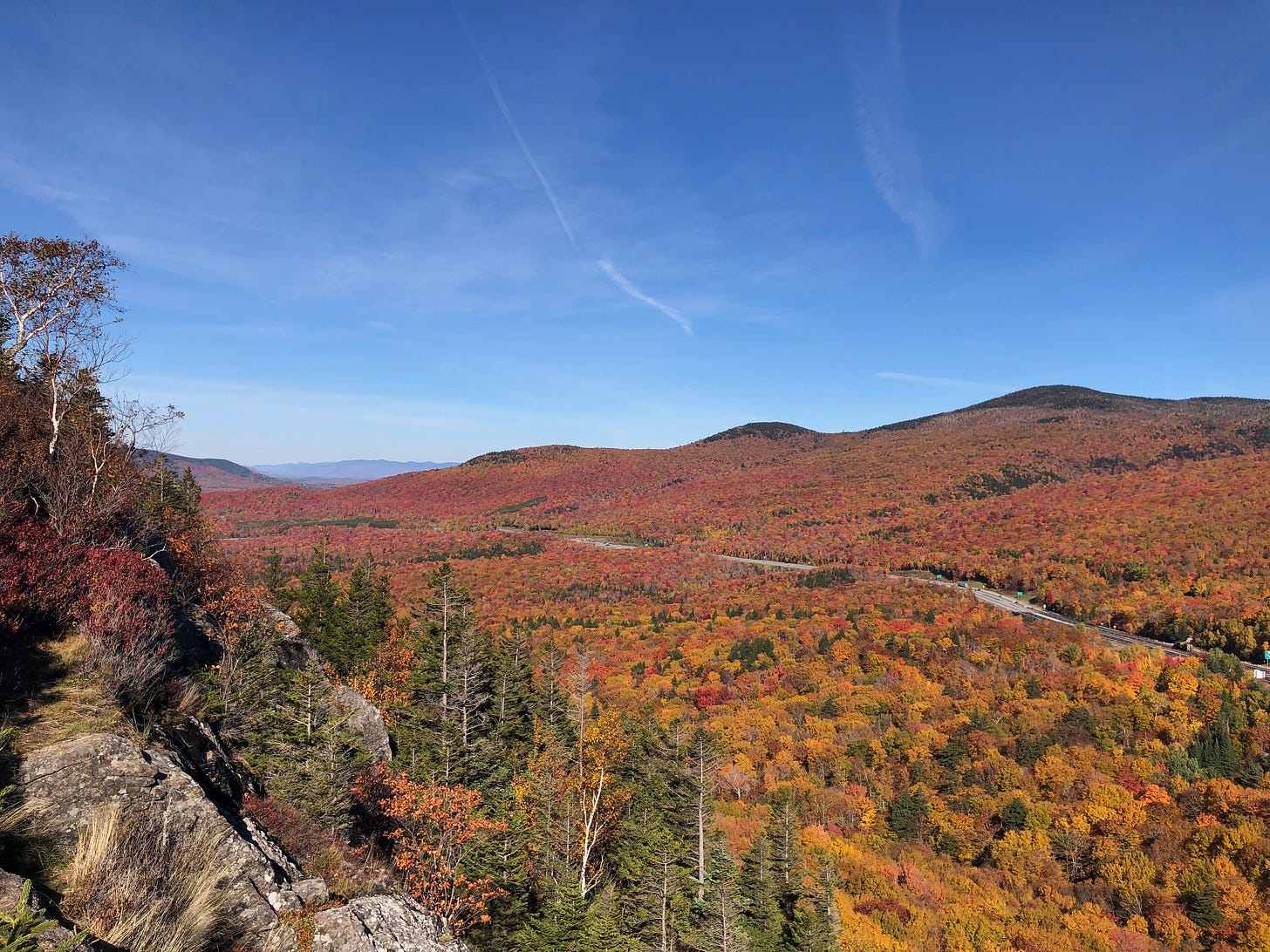
Mt. Monadnock, also a two-hour drive, is one of the most popular hikes in the world. Mt. Greylock, three hours away, is nestled in the Berkshires, a very quirky rural region with high concentrations of artists and performers. Poke around a few towns while you’re there; you never know what you’ll find. Then there’s Acadia National Park, New England’s only representation on America’s list of sacred spaces. At five hours, the trip will be a little longer, but Cadillac Mountain is worth it.
To cities
Providence, RI is an hour from Boston. It has an eclectic college neighborhood in Fox Point and a buzzing Italian enclave in Federal Hill. For movie buffs, the Providence Place mall contains a rare 70mm IMAX theater.
Newport, RI, 90 minutes from Boston, is beautiful in summertime. Its concentration of palatial Gilded Age mansions is viewable from the popular Cliff Walk. The Tennis Hall of Fame is here as well. Nearby Point Judith is a calamari powerhouse; if you’re a seafood lover, order a plate at a local restaurant.
Portland, ME is two hours from Boston and boasts a very vibrant modern restaurant and craft beer scene. Of course, you’ll also find classic lobster rolls, blueberry desserts, and whoopie pies. Break up the drive by visiting one of Southern Maine’s many picturesque lighthouses.
What to avoid
Generally stay away from the Seaport, a heavily sanitized neighborhood created from scratch within the last 20 years. It’s peppered with high-end national steakhouse chains and nightclubs desperately trying to be cool; there’s nothing distinctly Boston about it, and you’re highly unlikely to find Eastern Mass. natives there.
La Dolce Vita is probably the North End’s most egregious tourist trap. The pasta is mediocre and expensive; the atmosphere, over-the-top cheesy (a singing accordionist guilt-trips you into tipping him).
Sal’s Pizza, often served as a concession at events, is profoundly average. If you want Italian pizza in Boston, go to Florina or Pizzeria Regina instead.
Plymouth Rock is somehow smaller than however small you could possibly imagine it to be. If you’re on the South Shore, Plimoth Patuxet, a living history museum and classic elementary-school field trip destination, is a tad pricey but will answer all your questions about Pilgrim life.
Quincy Market is an important historic site and worth walking through, but don’t eat there. The vendors (with one exception: the fresh-cut French fry stand) are simply not good. Food is frequently left out in unclean setups under heat lamps.
Coogan’s in the Financial District is known for its $1 Bud Lights, not its mac and cheese. I learned that one the hard way.
Outside the city
The North Shore
Originally a collection of fishing-oriented towns, the North Shore underwent a dramatic transformation in the mid-1800s, becoming a summer resort for Boston’s elite and many of America’s wealthiest businessmen. Its remoteness helped maintain its exclusivity; after highway connections were built post-Depression, the private country clubs and upper-crust social scene dwindled. Although the region is more accessible to the masses now, its towns remain largely sparse and residential outside of their well-kept main streets. Some notable cities and towns include Salem, the site of the infamous witch trials; Gloucester, once among the world’s leading fishing ports; Essex, the birthplace of fried clams; and Rockport, a vibrant artists’ colony.7
Salem’s haunted aesthetic has attracted many New Age-themed businesses and ghost tours. The city becomes extremely congested in October, especially as Halloween approaches, so avoid it at that time of year unless you’re partaking in the festivities.
A day on the North Shore
Start your morning peacefully amid the picturesque windy streets of Marblehead, filled with quaint old houses. Stop at Old Burial Hill, which provides a beautiful view of the water. Grab a pastry or two from A & J King in next-door Salem and explore that city’s cobblestoned downtown (optional: make a longer stop at the Peabody Essex Museum, then grab lunch at the Clam Shack). To the east, Gloucester’s Cape Ann Museum (closed Mon) catalogs local lore and Dogtown Books (closed Mon) has local literature you can browse or buy. Next, wander around Rockport’s town center, which boasts several dozen galleries that are free to look inside. Don’t miss Bearskin Neck, a delightful stretch of shops right on the water. Taste fresh fried clams in Essex (Essex Seafood) or Ipswich (the Clam Box). Although the lavish hotels built during the region’s heyday are long gone, the Crane Estate in Ipswich ($10 entry, free on weekdays Nov-Apr) remains; it’s worth visiting to understand just how genteel the area once was. If it’s fall, stop at nearby Russell Orchards for some cider donuts. At the North Shore’s northern tip, the city of Newburyport has a beautiful red-brick downtown adjacent to a pleasant waterfront park. Spend your evening surrounded by locals at a divey sports bar like Ipswich’s Choate Bridge Pub (cash only) or Newburyport’s Park Lunch — both have great clams in case you didn’t get them earlier. Finally, head over to Richardson’s in Middleton to top off the day with classic New England ice cream.
Cape Cod
A preeminent summer colony deeply embedded in New England folklore, the warmer months transform the Cape into a vibrant gathering place every year. Its prolific beaches and harbors serve as getaways from the city’s bustle and humidity. Communities of artists planted roots here in the 20th century, attracting generations of landscape painters to the serene surroundings. Around 230,000 people live on the Cape year-round, a figure that skews heavily toward retirees and creatives.
The Cape’s stark seasonality is no accident: weather is unpleasant for much of the year. Whipping wind is commonplace and spring arrives late, with average high temperatures not crossing 60 until mid-May in Chatham. It all pays off in the dog days of summer, when the heat index around Boston routinely spikes into the 90s while Cape dwellers enjoy beautifully warm and temperate days.
If you’re visiting Martha’s Vineyard or Nantucket, you’ll be taking a ferry from the Cape. The main ferry for Martha’s Vineyard departs from Falmouth; the Nantucket route leaves from Hyannis.
Since I didn’t visit growing up, the Cape is not my area of expertise, but I’ve gradually been learning from locals who I’ve befriended. Check back for additions to this section!
A day on the Cape
Soon after crossing over the Cape Cod Canal, pop inside the Cape Cancer Thrift Store in Sandwich; you’ll likely find some great bargains for a good cause. If you’re detouring south to Falmouth, check out the gardens of Highfield Hall or the free Woods Hole Aquarium. Moving eastward, meet local creatives at the Hyannis artist shanties, a row of charming sheds whose occupants rotate weekly throughout the season. Nearby, the JFK Museum helps visitors understand the Kennedys’ attraction to the Cape, a major factor behind the area’s storied reputation. Once you’re feeling hungry, have some fried seafood at Kream N Kone in West Dennis; close by, Sundae School (cash only) is a classic stop for ice cream. Main Street in Chatham is a very pleasant walk with lots of shops. The dramatic steep descent onto White Crest Beach in Wellfleet is stunning; it’s a very long beach, so there’s sure to be space once you’re at sea level. A few minutes away, PB Boulangerie offers great pastries as well as a sit-down bistro. Explore the Cape’s sand dunes at the National Seashore, perhaps encountering one of the dune shacks where artists have secluded themselves to spark creativity. Commercial St. in Provincetown is a lively stroll with eclectic art galleries, novelty stores, and abundant nightlife, plus an excellent golden cupcake with buttercream frosting at ScottCakes. The Brewster flats, specifically Paine’s Creek Beach, are a fantastic place to watch a sunset; if it’s low tide, you’ll be able to walk far into the ocean. The first time I went to Land Ho! in Orleans, it was bursting with activity on a rain-filled December evening; on the Cape, that’s how you know someplace is a true locals’ hang. Even if you’re just stopping by for drinks, order a cup of clam chowder — it ranks among the best I’ve ever had.
Consult the Cape Cod Times's beach guide, which is indispensable for planning your time on the sand.
Route 2
For two centuries, the tony suburban towns along the Concord Turnpike have been intellectual bastions, playing host to many of America’s literary giants. Concord was a nexus for transcendentalism, a distinctly New England school of thought radical for its time.8 Today, the region retains its classic character and ranks among the nation’s most prosperous places.
A day along Route 2
For breakfast, grab donuts from Linda’s or pastries from Praline, both in Belmont. Stop by Robbins Farm Park, known to locals as “Skyline Park” for the excellent views of Boston it provides. Head over to the Lexington Battle Green, the site of the shots that kicked off the American Revolution. For hardcore history nerds, the Lexington Historical Society operates three historic structures you can take paid tours of. If they’re in season, snag some cider donuts at Wilson Farm. Next door in Concord, the Concord Museum, Emerson House, and Louisa May Alcott House all offer paid tours, though you don’t need to pay to get a whiff of the town’s love for books — the public library is gorgeous inside. A block down the road, the Barrow Book Store is a hidden gem, with extensive collections of rare finds. Don’t leave without stopping by Walden Pond to see Thoreau’s cabin; you can also pay your respects to him and Concord’s other legendary writers at Authors’ Ridge. Further west, you can go candlepin bowling at the Acton Bowladrome. Finish off the day by playing a round of mini golf at Kimball Farm in Westford and enjoying generous portions of homemade ice cream afterward.
Dictionary
rotary - a traffic circle, but bigger and faster than the ones you’re probably used to
townie - a local with undying pride for their hometown
Eastie - East Boston
Southie - South Boston
Yankee - refers to the descendants of the English settlers, especially in contrast to the Irish and Italian immigrants who arrived later. Yankees had a reputation for being unemotional, industrious, and frugal.
Brahmin - a member of the tight-knit Yankee upper class. This aristocratic group was noteworthy for their pretentiousness, worldliness and gentility.
bubbler - a water fountain
grinder/spuckie - a sub. Spuckie can also refer to the sub roll.
frappe - milkshake
packie - liquor store
cellar - basement
carriage - shopping cart
regular (coffee) - with cream and sugar.
triple decker - a common form of apartment building in New England; almost all were built between the Civil War and Great Depression.
Masshole - Demonym for people from Massachusetts. Originally derogatory, since been reclaimed by locals.
wicked - very
the Irish Riviera - the South Shore
down the Cape - on Cape Cod
Pronounce your names correctly:
Towns
Concord - KON-kerd
Gloucester - GLAW-ster
Streets/places
Tremont - TREH-mont (not TRAY-mont or TREE-mont)
Bowdoin - BOW-din
Clarendon - CLAIR-in-din
Marlborough - MARL-bro
Newbury - NEW-berry
Copley - COP-lee
Quincy Market - KWIN-zee
Faneuil Hall - FAN-you-ul
Interacting with New Englanders
Boston is the heart of New England. New Englanders maintain a strong, distinct cultural identity that extends to the way we deal with each other (and, by extension, you). Here’s what to expect:
We’ll be very direct. If you ask for an accommodation and it’s denied, you’ll probably get a firm no. Don’t take offense. From our perspective, we’re doing you a favor by not leading you on or feigning apology. Take things literally and expect to be taken literally; if someone is happy, know that it’s genuine. If someone is bothered, you’ll know it and you’ll know it fast.
Ask plainly and unapologetically. One story I heard from someone whose relatives were visiting from Wisconsin sticks with me. While ordering pizza, the Wisconsinite took pains to explain she needed it ready at a certain time, proceeding to give a detailed explanation of all the errands she was running before picking up the pie. On the other end of the line, the worker was unamused: “just tell me when you need it!” The lesson? It’s always better to be plain-spoken in New England.
We shy away from expressive greetings. New Englanders will naturally mind their own business in many aspects of life, including social settings. You may perceive a public place as cold due to the lack of smiles or spontaneous conversation. However, once you start talking to someone, things will be just fine.
Logistics for travelers
Now that you’ve been convinced of the merits of coming to Massachusetts, let’s talk about how to make it happen.
When should I come?
Early October. You’ll still have access to the vast majority of seasonal activities; crowds will be markedly thinner than summer and weather much less humid. Conditions may be brisk, but generally warm enough to spend full days outdoors. Then, there are the added bonuses of near-peak fall foliage, cider donuts, and (potentially) playoff baseball.
October 5th: Average high 66, average low 51
If you can’t come in autumn, the next best time is early summer, especially if you’d like to see the Cape. Aim for mid-June; you’ll avoid July’s crush of visitors and likely be spared the worst of the humidity. One noteworthy difference: virtually all of the city’s undergraduate population will be away. Boston’s big enough that this doesn’t deaden the environment, but it does lend summer a distinct vibe.
June 15th: Average high 76, average low 60
Where should I stay?
I’d stay on the edge of the Back Bay near the Public Garden. The Hilton Park Plaza is pretty much my ideal location.
Travel times from here:
The Back Bay - 5 minute walk
Beacon Hill - 15 minute walk
North End - 20 minutes via train / 30 minute walk
Fenway - 20 minutes via train / 35 minute walk
Harvard Square - 20 minutes via train
Hotel prices are high: there’s no way around it. The meager discounts on hotels outside the city proper are nowhere near worth the hassle of traveling into and out of Boston each day.
How long should my trip be?
For Boston and its immediate vicinity, two full days (excluding travel days) are enough. A rough itinerary might look like:
Day 1
Morning: lots of walking (neighborhoods/Freedom Trail)
Afternoon: museum of your choice, Public Garden
Evening: candlepin bowling, fried seafood or Italian dinner
Day 2
Morning: explore Cambridge (Harvard tour and/or museums)
Afternoon: Castle Island
Evening: sporting event (Red Sox/Celtics/college hockey)
Add one day per Massachusetts region you’re exploring (North Shore, Cape, etc.).
Add two days if you’re taking an outdoorsy side trip to Northern New England (e.g., Stowe or Acadia).
How will I get around?
Within Boston, I recommend mostly walking. The train system (known locally as the T) can speed things up, especially if you’re going outside the city to Cambridge or Somerville. The last trains run a little past midnight and stations accept contactless payments.
For adventures outside of Boston, I recommend driving. Because every town is distinct, fully exploring a region requires stopping in a bunch of different towns. This is extremely cumbersome, if not impossible, to do via train: not all towns have train stops and trains outside of Boston run at much lower frequencies.
Where will I get my morning caffeine?
Tatte has been featured on countless lists at this point, but for good reason. The all-day food menu is excellent; every location is super inviting and pleasant to hang out in. Another local chain, Flour, has slightly less aesthetic digs but very good cinnamon rolls which sell out early in the morning. Thinking Cup is another popular local chain with convenient locations near the Boston Common and in the Back Bay. Barismo and George Howell both use their own beans if you’re interested in sampling a local roaster’s fare.
And don’t leave without ahderin’ an iced regulah from one of our 1,000+ Dunks, kehd.
Enjoy your trip!
Local friends: reach out to me on Instagram with your tips!
Travelers: write to me if you followed this guide, it will make my day!
Jump back to a section:
Food
Activities
Sports
Parks
Museums
Boston on a budget
Side trips
What to avoid
Outside the city
Dictionary
Interacting with New Englanders
Logistics for travelers
I suggest pairing a trip to the Bowladrome with Richardson’s ice cream, 15 minutes away.
See chapter 4 of Oscar Handlin, Boston’s Immigrants for further reading.
See Thomas H. O’Connor, The Boston Irish for further reading.
See chapter 1 of Michael Rawson, Eden on the Charles for further reading.
That road is where present-day Washington St. lies.
See William Newman and Wilfred E. Holton, Boston’s Back Bay for further reading.
See Joseph E. Garland, The North Shore for further reading.
See Philip F. Gura, American Transcendentalism for further reading.


